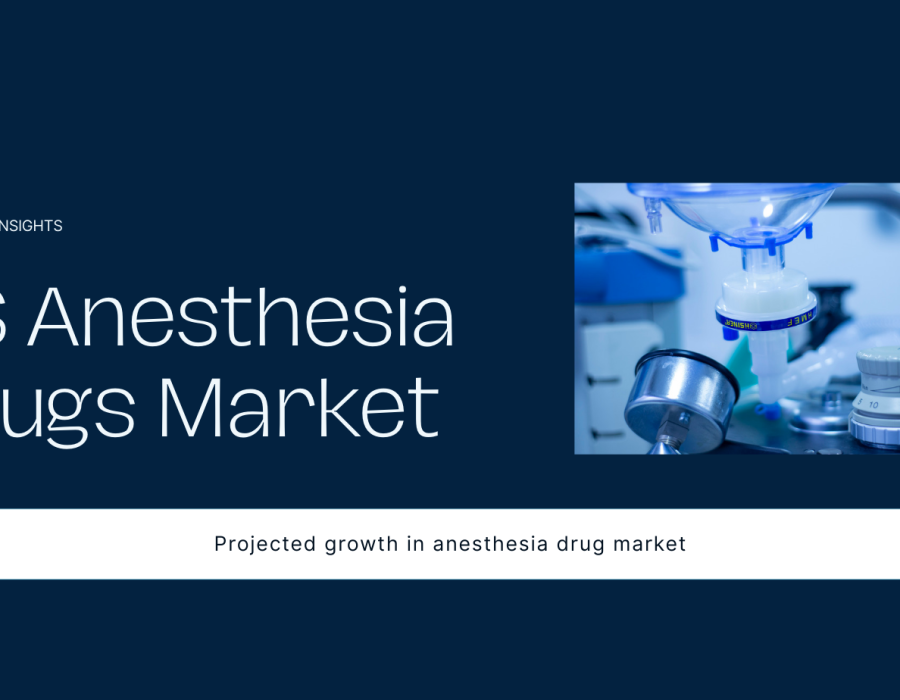United States Anesthesia Drugs Market (2025–2033)
Press Release: U.S. Anesthesia Drugs Market Set to Reach USD 3.67 Billion by 2033, Driven by Rising Surgeries and Drug Innovation
The U.S. anesthesia drugs market is projected to grow from USD 2.61 billion in 2024 to USD 3.67 billion by 2033, at a CAGR of 3.86% during the forecast period, according to a new research publication. Increasing surgical volumes, rapid advances in anesthesia formulations, and a strong regulatory framework are propelling market growth.
Market Overview
Anesthesia drugs are essential pharmaceutical agents that ensure patient comfort, pain control, and safety during medical procedures. These drugs fall into three main categories:
- General Anesthesia (Inhalation and Intravenous)
- Local Anesthesia
- Regional Anesthesia (within the local classification for this report)
These medications are used across various healthcare settings such as hospitals, outpatient surgical centers, and dental clinics, with applications spanning from major surgeries to routine diagnostic procedures.
United States Anesthesia Drugs Market Size
Metric
Value
Market Size (2024)
USD 2.61 Billion
Market Size (2033)
USD 3.67 Billion
CAGR (2025–2033)
3.86%
Base Year
2024
Forecast Years
2025–2033
Historical Years
2020–2024
Key Market Drivers
1. Rising Volume of Surgical Procedures
Over 15 million surgeries are performed annually in the U.S., including orthopedic, cardiovascular, and cosmetic interventions. The aging population and prevalence of chronic conditions such as cancer and heart disease continue to drive surgical volumes. Moreover, the 2023 report by the American Society of Aesthetic Plastic Surgeons noted over 26.2 million cosmetic procedures—highlighting a growing demand for anesthesia support.
2. Innovation in Drug Formulations
Next-generation anesthetics focus on rapid onset, fewer side effects, and faster recovery. Drugs like propofol, sevoflurane, and ropivacaine are gaining ground due to superior efficacy. For example, Baxter’s 2024 launch of Ropivacaine Hydrochloride Injection in a prefilled bag format reflects the push toward convenience and safety.
3. Enhanced Focus on Patient Safety and Comfort
Modern anesthesia techniques aim to reduce postoperative complications such as nausea and cognitive dysfunction. Patient-centric approaches encourage customized anesthesia plans, with increasing use of short-acting and targeted drugs for better outcomes and faster discharge.
4. Government & Insurance Support
Programs like Medicare and Medicaid are expanding coverage for surgeries, particularly those involving the elderly. This boosts the consumption of general anesthesia drugs. The FDA's stringent regulations also maintain market integrity by ensuring safety and effectiveness of newly approved drugs.
Recent Developments
- April 2024 – Baxter launched Ropivacaine Hydrochloride Injection, USP, enhancing regional anesthesia options for surgery and acute pain management.
- August 2024 – Amneal Pharmaceuticals secured FDA approval for Propofol Injectable Emulsion USP in three concentrations.
- February 2024 – Hikma Pharmaceuticals released Fentanyl Citrate Injection, USP, adding depth to its anesthesia and pain relief product line.
- November 2023 – Lupin Ltd launched Rocuronium Bromide Injection USP in the U.S. following FDA approval, used in rapid sequence intubation and muscle relaxation during surgeries.
Market Segmentation
By Type of Anesthesia
- General Intravenous Anesthesia
- Propofol
- Etomidate
- Ketamine
- Barbiturates
- General Inhalation Anesthesia
- Sevoflurane
- Desflurane
- Isoflurane
- Others
- Local Anesthesia
- Bupivacaine
- Ropivacaine
- Lidocaine
- Chloroprocaine
- Prilocaine
- Benzocaine
- Other Local Anesthetics
Reimbursement Landscape
A) Private Insurance Providers
- Aetna International
- Coventry Health Care
- Anthem Blue Cross and Blue Shield
- Blue Cross and Blue Shield of Texas
- United Healthcare
B) Public Insurance Providers
- Medicare
- MDWise
These insurers significantly influence the adoption of costly anesthesia drugs by determining coverage levels and co-pay structures.
Regulatory Environment
The U.S. Food and Drug Administration (FDA) plays a critical role in shaping the anesthesia drugs market. Stringent protocols for approval, safety labeling, and clinical trials ensure high market standards. Recent approvals, such as that of Caplin Steriles’ Rocuronium Bromide Injection, highlight the FDA’s role in catalyzing innovation and boosting investor confidence—as seen by Lupin’s 3% stock gain post-approval.
Competitive Landscape
1. Baxter International Inc
- Overview: A leading provider of sterile injectables and anesthesia products.
- Recent Moves: Expansion of prefilled anesthesia solutions in the U.S.
- Revenue: Substantial growth in pharmaceutical segment post-Ropivacaine launch.
2. Abbvie
- Overview: Market leader in advanced pharmaceutical therapeutics.
- Recent Moves: Strategic acquisitions to enhance anesthesia portfolio.
3. Medtronic Plc
- Overview: Focused on surgical tools and anesthesia delivery systems.
- Recent Moves: Investment in integrated surgical-anesthesia platforms.
4. Draegerwerk AG
- Overview: Specializes in anesthesia workstations and monitoring equipment.
- Recent Moves: Partnerships with hospitals for bundled anesthesia solutions.
5. Koninklijke Philips NV
- Overview: Diversified player offering digital anesthesia monitoring systems.
- Recent Moves: Integration of AI to enhance anesthesia safety.
6. Abbott Laboratories
- Overview: Global healthcare company with growing presence in pain management and diagnostics.
- Recent Moves: Innovation in anesthesia monitoring sensors.
Conclusion
The United States anesthesia drugs market is poised for steady growth through 2033, propelled by technological advancements, robust healthcare infrastructure, and regulatory support. Market stakeholders are focusing on innovation, efficiency, and patient-centric care to meet rising procedural demands across diverse healthcare settings.





Comments